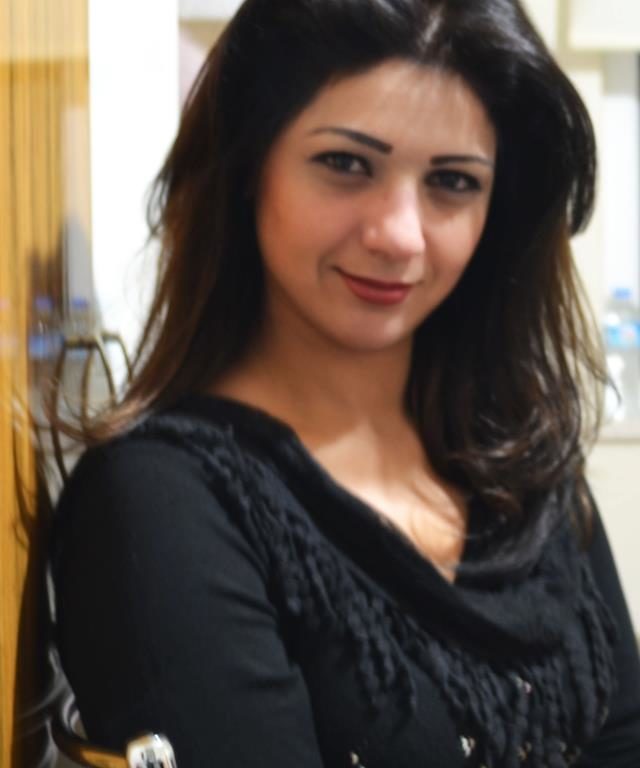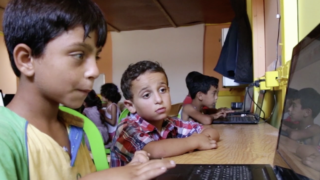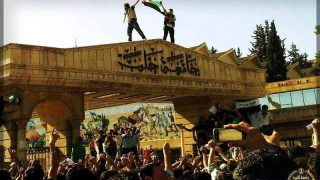This article is the outcome of an ongoing collaboration with the Syrian Female Journalists Network with support from The Guardian Foundation and International Media Support (IMS)
Filming in Kurdish-held areas: Jano Shaker, Judy Haj Ali
Filming in rebel-held areas: Ayham Beyoush
Video editing: Saad El Hajj
Infographics: Ahmed Najjar
I was speaking with him on WhatsApp. The tone of his voice and the way he spoke suggested that as the eldest brother, he was the decision-maker in the family and was perhaps also the one in control.
Mohammad is 13-year-old, he is in the 7th-grade in middle school. He lives with his family in Maarrat al-Numan in Idlib Countryside, the area is now under the Syrian opposition. He has two sisters who are five and twelve years old.
Mohammad attends one of the schools affiliated to the opposition Syrian Interim Government. The Interim Government policy is to segregate males and females in schools starting from the 5th-grade. He justifies that saying, “mixing in school is prohibited and haram, and that’s better for both girls and boys, because this way, girls can preserve themselves.”
We tried to find out how the school curriculum Mohammad is learning influences the way he thinks, and how it affects his relationship with his mother and sisters. He said, “what I learn in books doesn’t matter that much to me, what matters is upholding the principle that my sisters do not leave the house alone, and they they only go out if my father or myself chaperone them.”
The Syrian revolution erupted eight years ago and changed the political scene completely. We thought it is important to investigate the extent to which these changes affected the education process. Our main aim is to explore the level of awareness among educators about the importance of breaking gender stereotypes about the roles of women and girls. We also want to explore how these roles are portrayed in the various curricula taught across the country.
We worked on analyzing two subjects; Reading and Social Sciences in the curricula taught for 5th- and 6th-graders in regime-controlled areas, opposition-controlled areas, and the areas of the Kurdish Autonomous Administration in North-East Syria.
It became evident to us by reviewing and analyzing the Reading curricula in each of these areas that most of the texts were written by male authors. In addition, the curricula included texts authored by parties or institutions such as the Ministry of Education, or other educational or medical institutions.
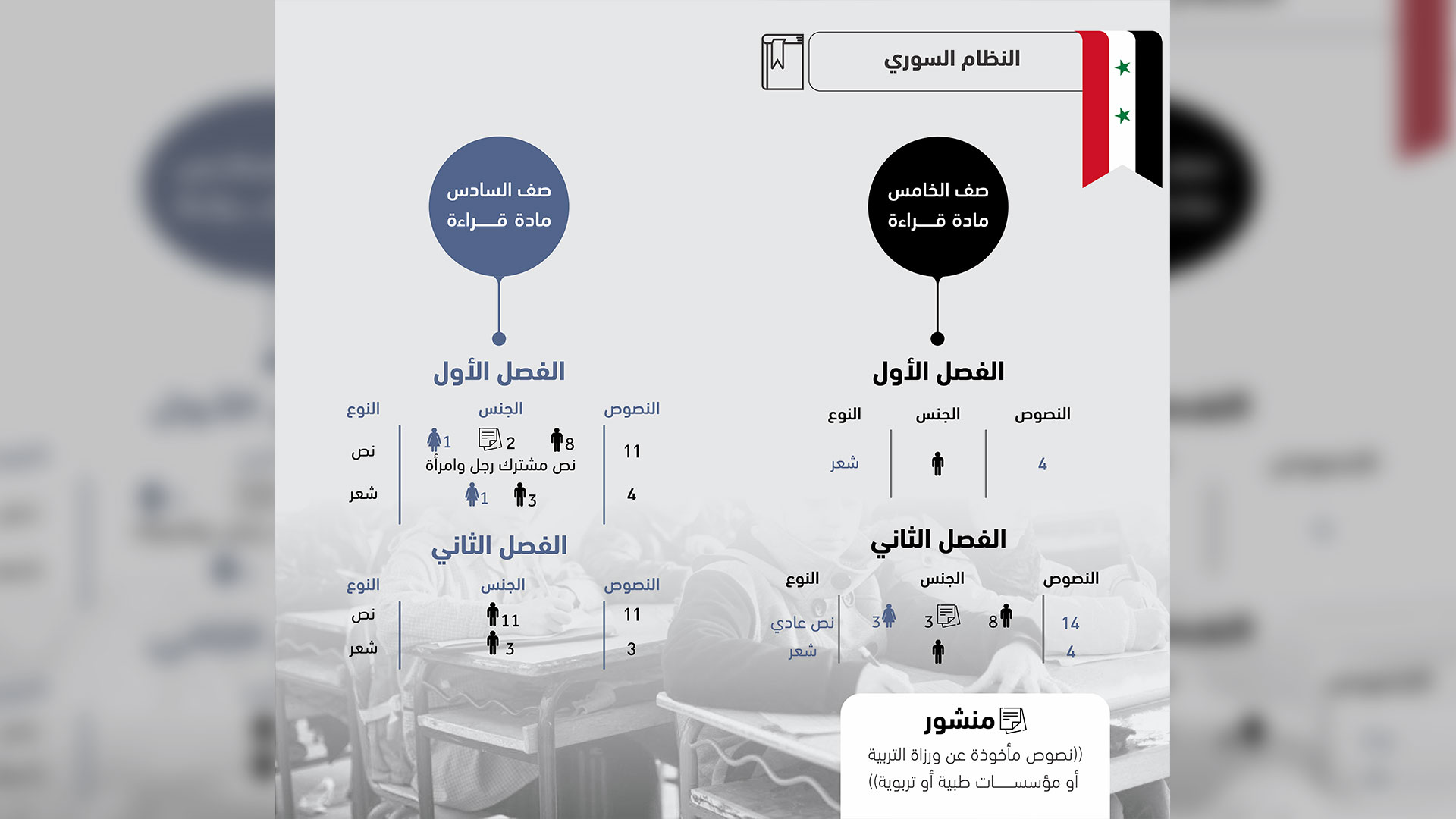
Text in the image above:
Lesson authored by the Ministry of Education or Medical or Educational Institutions.
5th Grade Reading curriculum:
The first term: Poetry: 4 lesson: male authors
The second term:
Prose: 14 lessons: 8 by male authors. 3 by female authors and 3 unidentified.
Poetry: 4 lessons: male authors.
6th Grade Reading curriculum:
The first term:
Prose: 11 lessons: 8 by male authors. 1 by female authors and 2 unidentified.
Poetry: 4 lessons: 3 by male authors, 1 by female.
The second term:
Prose: 11 lessons: male authors.
Poetry: 3 lessons: male authors.
The Syrian Regime’s curriculum is not adequately inclusive, especially in the light of the deteriorating security conditions
Hiba (pseudonym), is 43- year-old and she has been working as a primary school teacher for nearly 15 years. She talked to us about her views concerning the curriculum and teaching methods adopted in state schools affiliated to the Syrian government. “The Syrian regime tried to introduce new teaching materials in an attempt to portray itself as promoting women rights. However, in many aspects, the new curriculum reinforces the stereotypical image of women. Until now, it failed to include a realistic depiction of the reality of women and girls in Syria and the role they are playing in achieving peace. Despite the fact that the curriculum was recently updated, we didn’t find in the new teaching materials any mention of the role women played in war relief efforts or humanitarian aid. Instead, women’s were depicted in ways that confirmed stereotypes and reemphasized the gendered roles that women are traditionally limited to.”
The Syrian regime issued the latest update to the educational curriculum in the academic year of 2018-2019. According to several teachers we interviewed, males and females are still segregated starting from middle school. There are few exceptions to this gender separation, mainly in few private schools in Damascus, Homs, and Hama.
We analyzed 63 lessons from the Reading curriculum for 5th- and 6th-grades, along with 65 other lessons from the Social Sciences subject. According to our analysis, 23 of the lessons from Reading and 15 from Social Sciences were discriminatory against women and girls. This discrimination was noted both in texts and images.
Innovation and invention are male characteristics
In our analysis of the Syrian regime’s educational curriculum, we found that professions like scientist or inventor were referred to as male occupations. There was one exception; one lesson only discussed a Syrian female scientist. On the other hand, we found multiple references to stereotypical images of the role of women as mothers, caretakers, teachers, or secretaries. In contrast, the names of many famous male poets, calligraphers, and scientists were listed in the lessons.
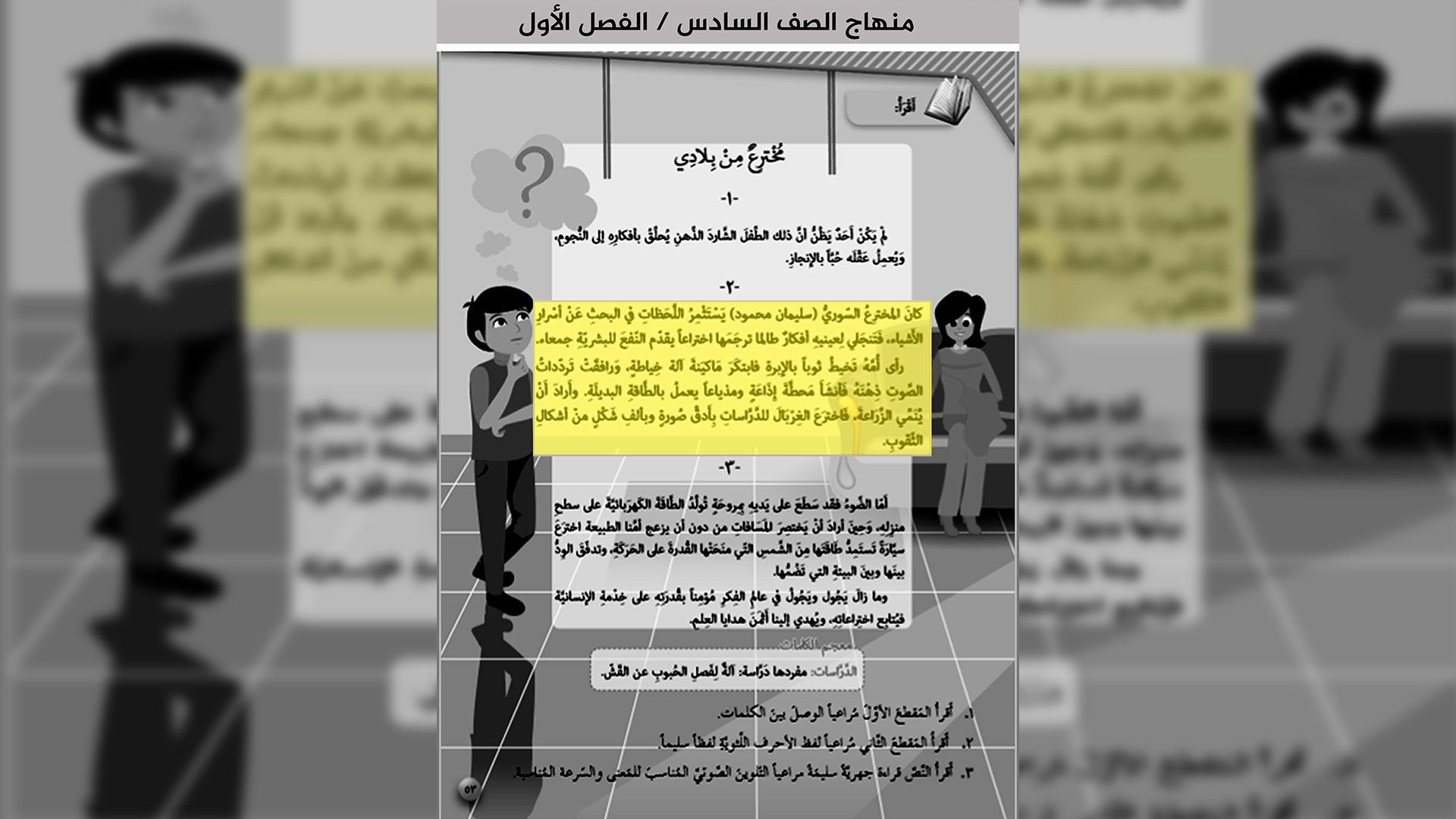
As for sports and hobbies, some lessons depicted boys playing football whereas girls had hobbies that were “suitable to their gender” such as playing the violin.[1]
Nursing is a Woman’s Profession
The Syrian regime’s educational curriculum depicted nursing as a women-only profession. One lesson, for example, spoke about the occupation of being a female nurse, and how selfless nurses are. It attributed “feminine qualities” to nurses such as “being amicable and pleasant, beautiful, and smiling.” The same gender stereotype was repeated in the 6th-grade lessons where there were verses of poetry that described female nurses as “white fairies,” and “blossoming flowers decorating this world,” and “compassionate.” We did not find any example of discussing nursing as a profession for men as well.
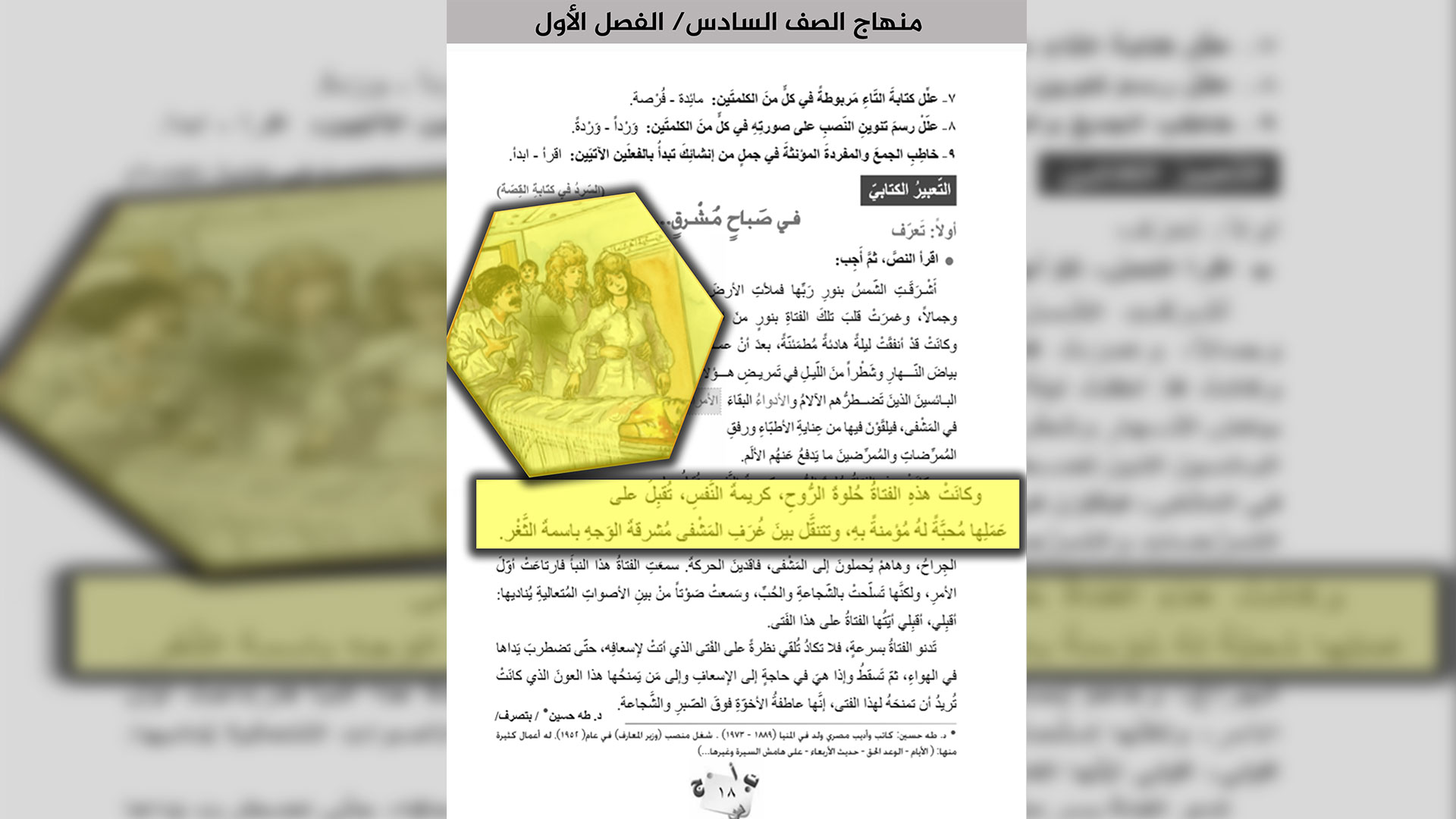
Politicizing the Image of Women:
We found that there was a kind of politicization of education in a way that served the interests and agendas of the Syrian regime. For example, one lesson discussed a girl called Sahar who always dreamed of excelling in science. Sahar aspired to win competitions and to raise her country’s flag on her shoulders in celebration. The text has a politicized connotation; it brings to mind the political controversy surrounding the Syrian flag. The Syrian opposition readopted the independence era green flag to distinguish itself from the Syrian regime red flag. The text also associates women excelling in science to their patriotic feelings and sense of duty. We could not find a similar link or association made when a male inventor was discussed.
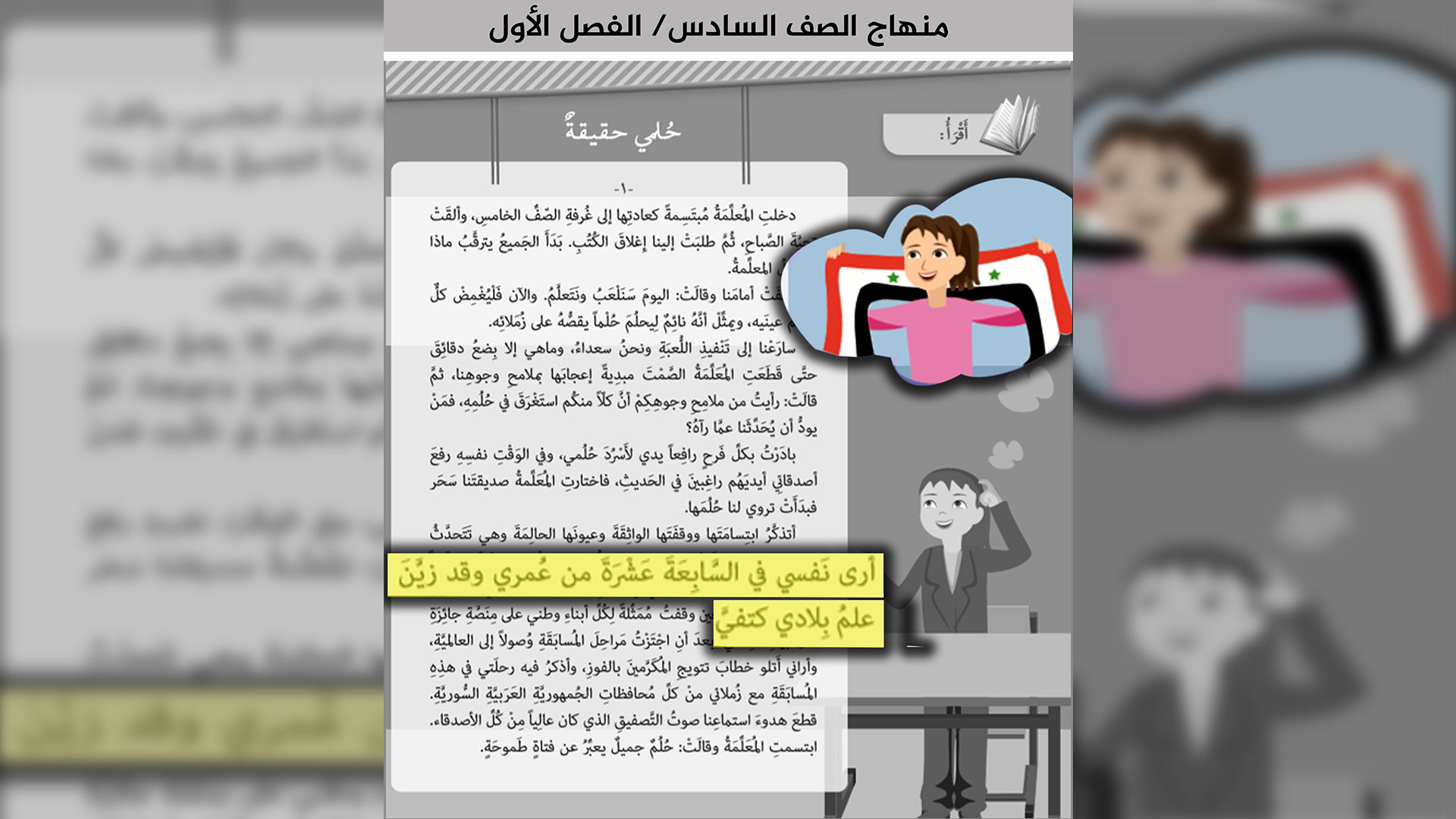
The educational curriculum in the areas of the Autonomous Administration of North and East Syria; an attempt to achieve gender integration.
The curriculum is published both in Arabic and Kurdish. We analyzed 36 Reading lessons published in Arabic in the curriculum of 5th- and 6th-grades. We found that 19 of those lessons included discriminatory language or images that stereotyped women and girls. We analyzed 156 lessons form the Social Sciences, of which 10 lessons were discriminatory.
During our field visits to the Al-Sharif Al-Radi School in Qamishli, we noticed that there were no interactions between boys and girls in 6th-grade, whereas boys and girls in 3rd-grade mixed and interacted. We also observed that female students seemed comfortable and at ease when they interacted with their male classmates.
Jiyan Harasan is a Kurdish language teacher in the Al-Radi school. She talked to us about their efforts to help the girls and boys overcome social timidness resulting from the largely conservative culture. They sit them together side by side and make them participate in activities together.
We observed that in Al-Radi School boys and girls played jointly in many activities, and they all appeared to accept the idea of playing together. The girls, however, did play some of games on their own when the boys played football.
On the other hand, in another field visit to Boulous Yaacob School in Qamishli we found that there were no games that were organized for girls only. Football and basketball were played by boys on their own. Both girls and boys joined in general exercise, whether that was daily morning exercise before the beginning of classes, or exercises given at the beginning of every PE lesson.
We asked Samira Al-Hajj Ali, the co- president of the Education Committee in Al-Jazira region in the areas of the Autonomous Admistration about the stereotyping of women and about gender segregation, “this gender stereotyping is not intentional. The curriculum was written just after the establishment of the Autonomous Administration, and the teaching materials don’t discriminate between girls and boys. At the moment, there are girls-only teams in Sports for football, volleyball, and gymnastics. These curriculum, of course, are subject to discussion and open to change and development.”
We surveyed the opinions of some teachers working with the curriculum adopted in the Autonomous Administration areas, and all of them said they believed that the majority of lessons taught are adherent to patriarchal thinking and do not create a just perception of women and girls in the minds of the students.
Analysis of the curriculum in the Autonomous Administration Areas:
During our analysis of the curriculum taught in the Autonomous Administration areas, we found that there was an implicit attempt to perpetuate gender stereotypes. The father was depicted as the decision-maker and moral authority for his children, which re-emphasizes the hierarchy of authority already prevalent within the Syrian communities.[2]
On the other hand, mothers were depicted as “selfless givers”.[3] one of the lessons discussed the female octopus and how she sacrifices herself for her children to survive. In another lesson from the Social Sciences for 6th-graders, mothers were depicted as the selfless givers, whose only role is to take care of her children. In the Kurdish language Reading curriculum for 6th-grade, few adjectives were used to characterize who mothers are; they are “compassionate and warm” and they “responsible for laundry and sewing clothes”. Mothers are depicted as excessively emotional.
We would like to highlight a specific example from the curriculum for the 5th-grade that tells the story of a hermit who decides to start collecting money so that he can get married and have a healthy son. The moral of the story is: power is money and sons. The story reflects the traditional views of our society that believes that having money and male children are the main two factors of attaining power and dominance.
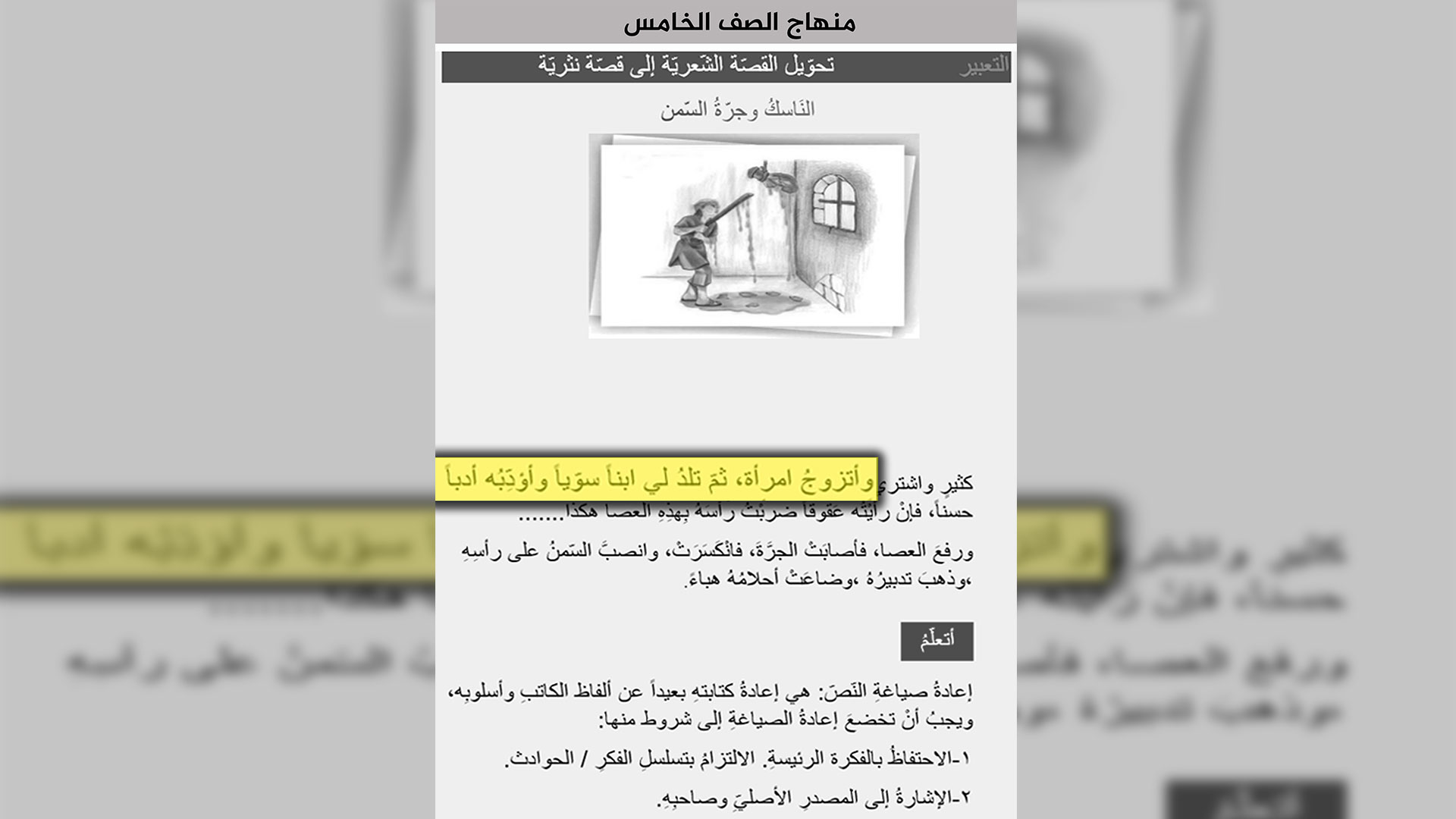
Is working the land gender-neutral?
The answer to that question can be found after we analyzed the curriculum taught in the Autonomous Administration areas. These areas of north east Syrian are largely agricultural, and both men and women work the land. However, the curriculum often marginalizes women’s work. Several lessons referred to men alone owning land and farming it.[4]
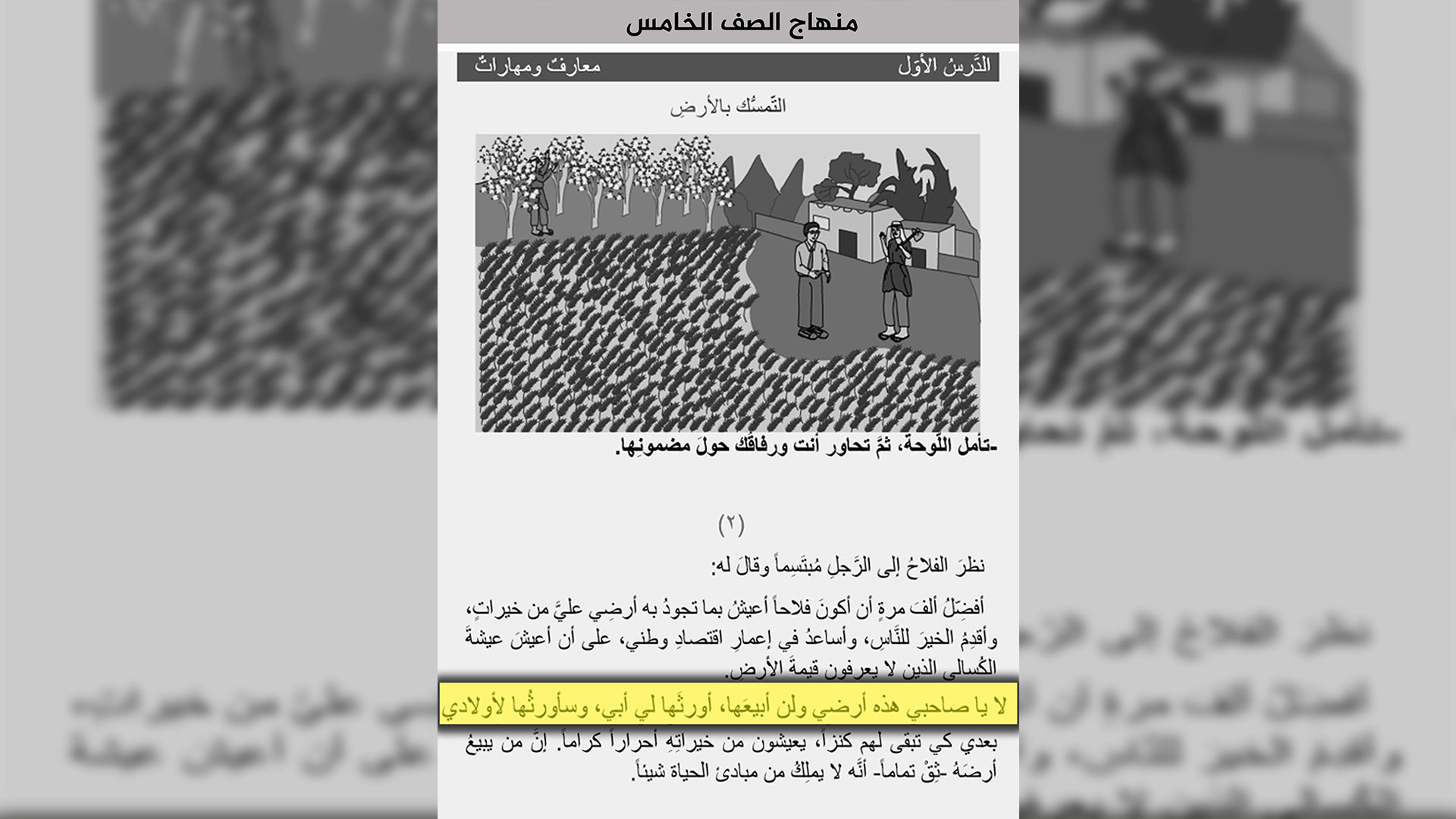
Contrarily, we noticed that there is an attempt in the Social Sciences book in Arabic to reflect that working the land was participatory between men and women among primitive societies. There were several examples, both text and images, of this idea. In addition, there was a reference in one of the lessons in the Social Sciences book for 5th-grade that primitive societies were matriarchal.
In the Kurdish language part of the curriculum, there is a text that talks about the matriarchal society, “The progress of society is measured by the progress of its women. For women are role models for society. Since ancient times, the time of Nilotic, women were the head of the household and oversaw all tasks including educating the children, construction and pastoralism.”
Managers and Leaders are Men while Women are Nurses
In our analysis of the curriculum, we found many paradoxes . For example, multiple lessons and images show that managers are always men, and never women. While nursing is depicted as a women-only profession. One lesson in the Reading curriculum for 5th-grade described nurses as white doves.
There were, however, lessons and images that were gender-balanced and broke the stereotypes. For example, a lesson in the Kurdish language Reading curriculum for 6th-grade entitled “Women and Life.” described women as guardians of the Kurdish culture and history across the generations. The lesson moves on to discuss the status women enjoyed when society was matriarchal, and how they helped inventing harvesting equipment and were responsible for livestock. The lesson concludes by describing how women became marginalized when societies became patriarchal.
The image of female fighters:
We analyzed both the Arab language and the Kurdish language Reading and Social Sciences curricula taught in areas under the Autonomous Administration. We noticed that Kurdish curriculum included many lessons and images about the Kurdish female fighters, while there was no mention of them in the Arabic curriculum at all.
Samira Al-Hajj Ali, the co- president of the Education Committee in Al-Jazira region in the areas of the Autonomous Administration explained this issue, “We tried to make sure that the curriculum respects the cultures of the various ethnic communities that lives in the Autonomous Administration areas. We tried to make sure the our curriculum doesn’t contradict the predominant culture of each community, and generally the Arab community is more conservative and thus less acceptable of women participating in fighting. That is also why the curriculum in Kurdish focuses on the prominent role the Kurdish women played during the revolution of Rojava and North Syria. The Kurdish language curriculum reflects that reality of women being female fighters, partisans, and politicians. It also highlights the various jobs women do and the different ways they contribute to society.”
The Syrian opposition’s curriculum attempts to be gender-balanced but remains inadequate as a result of the lack of resources
The opposition interim Syrian government’s printed its own curriculum. It is unified and taught in all the schools affiliated to it, whether in Idlib and its countryside or any other areas outside the control of the regime. The interim government, however, does not have complete control over the education process in the areas under the opposition control. Some schools are affiliated to the interim government while a few others are run by local relief organizations. Our research is limited to the interim government’s curriculum.
We analyzed 72 lessons in total from the Reading curriculum for 5th- and 6th-grade. We found that 18 lessons included discriminatory language and images. We analyzed 49 lessons from the Social Sciences, of which 12 were discriminatory.
The interim Syrian government operates within limiting conditions and with limited capacities, while the Syrian regime continues targeting the schools with aerial bombardment. Khaled Al-Sheikh Koloh is the head of the Curricula and School Inspections Department affiliated to the Education Directorate in Aleppo, and about this issue he said, “the Directorate of Education has limited financial resources, and that is the main reason why it was incapable of developing new curriculum that would have been more just to women and girls and that does not stereotype them. The function of the current curriculum is to simply prepare women and girls to become administrators and enter the job market. The current curriculum works on improving their technical knowledge without focusing on culture or values. There is still a great need for further training for the teachers so they can improve the way they interact with students and their education techniques in order to achieve better awareness of gender-equality.
Imad Barak, the Minister of Education in the Syrian Interim Government, said that the interim government’s curriculum is an adaptation of the old curriculum taught by the Syrian regime before the Syrian revolution. The Interim Government altered the regime’s curriculum and introduced many modifications. It worked on removing the symbols of the Syrian regime and the Arab Socialist Ba’ath Party while adding some symbols of the Syrian revolution.
We tried to interview female teachers in order to know more about the reality of education in the areas outside the control of the Syrian regime, and the challenges teachers and students face. Many of the female teachers we talked to refused to be quoted with their real names, and all of them declined to appear on camera. The reason behind their refusal is the conservative nature of the society that does not accept women appearing on the media.
Reem (pseudonym), a 46-year-old principal of a primary and middle school for girls in Idlib, thinks that the environment and the forces in power play a significant role in determining the way students are treated. Historically, Idlib and its countryside are very socially conservative. After the Syrian revolution began and later shifted into an open civil war, various different military factions came to dominate the area and fought amongst each other while fighting the Syrian regime. This power struggle has now ended with an alliance of Islamist groups under the name of Hayat Tahrir Al-Sham (HTS) taking over. Although HTS has not intervened in the curriculum until this moment, they enforce a code of dress. Reem said, “we often have to force female students to cover up in a specific Islamic dress following the orders of the HTS. They have previously interrogated me after objecting against forcing young girls to wear a long mantles that cover their ankles.”
During field visits to the Nassif Kubriti Primary School in Idlib countryside, we noticed that an arts and crafts class was not discriminatory. However, some of the teachers we interviewed insisted on the need to introduce changes to the curriculum to help promote a more positive image of women and reduce discrimination based on gender. These teachers refused to disclose their real names for safety concerns.
Boys and girls were segregated in the PE classes. Only the boys were allowed to run, while girls were asked to gather at the other side of the schoolyard. They were instructed to participate in activities that do not require them to move much in keeping with social habits. Girls are not allowed to take part in races or play football as that would be deemed socially inappropriate.
Omar (pseudonym) is a 34-year-old PE coach from Maarrat Al-Nu’man, we spoke with him over WhatsApp. He confirmed that there is a complete separation of girls and boys during PE, “this goes back to longstanding traditions and social norms in the Syrian society,. Rural communities, in particular, have always held on to the traditions that restrict women to the role of being a mother, a cook, and a childcarer, while men are not expected to participate in any of these duties.”
Analysis of the Syrian Interim Government’s Curriculum
Some of the lessons included images that were fair to women and girls. One of the lessons in the 5th-grade curriculum included an image that described the joy of having a babygirl in an attempt to break the predominant prejudice against having a girl.
For the first time during the analysis of all the different curricula taught across Syria, we noticed that women, and for the first time, are given a dual role. This curriculum described women work both inside the house and in public life. An activity section entitled “Daily Diaries” features in many lessons of the Reading curriculum for the 5th grade. One of those diaries was an activity that involved writing about the daily life of a working mom who had had a child and went back to work after her maternity leave ended.
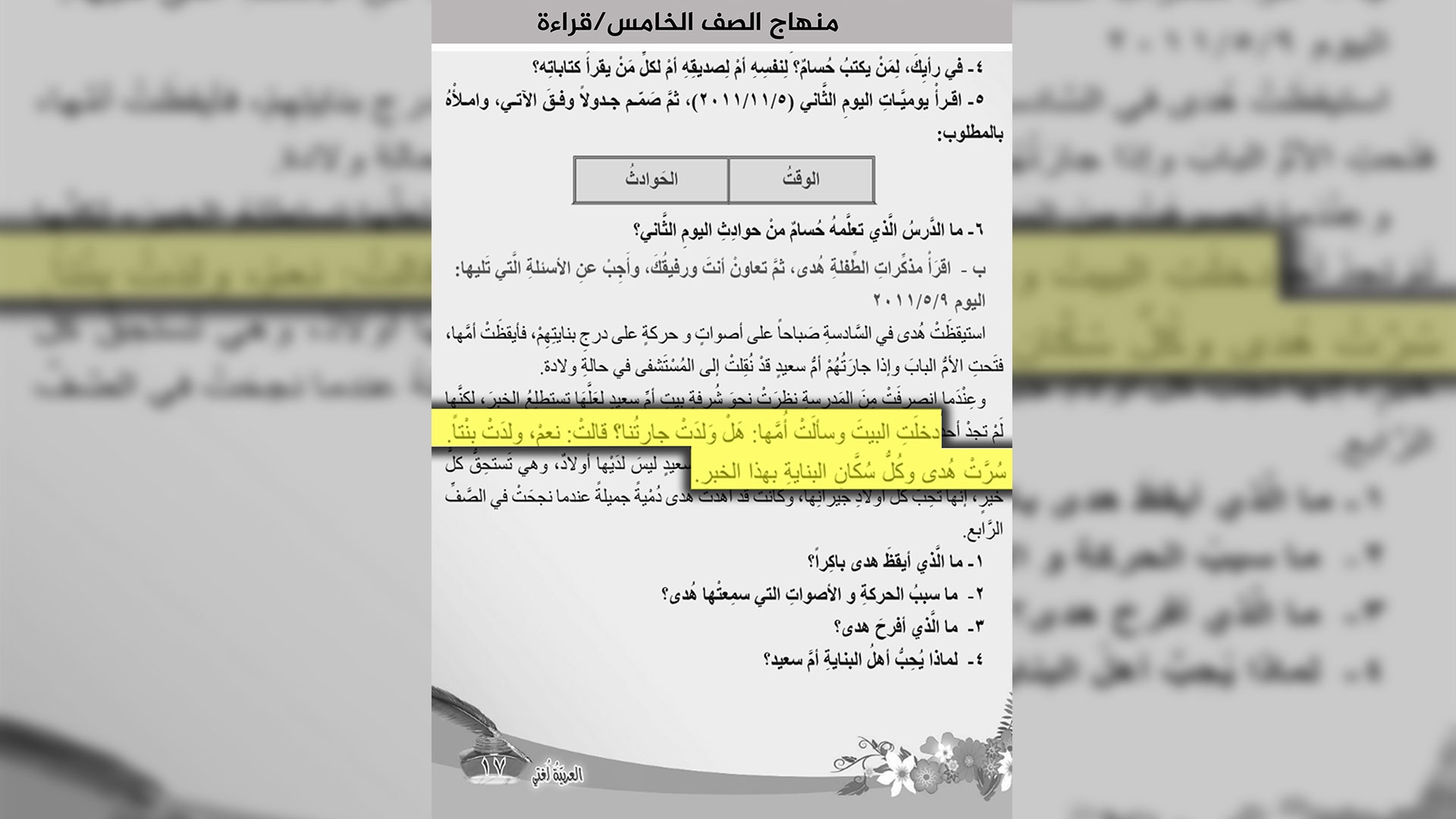
We also found that in this curriculum profession like being a scientist, and certain positive qualities like chivalry, courage, and cooperation are attributed to men only[5]. We found that some jobs that require manual labour or working in public were also restricted to men, including working in construction or cleaning, and being traffic police.[6]
We noticed in our research that many lessons in the Social Sciences curriculum for both 5th- and 6th-grade narrate the biographies of male leaders. There were only minor references to female leaders, the Phoenician Princess Elissar and Queen Zenobia were mentioned in the 6th-grade curriculum. In the Social Sciences book for 6th-grade, there was a lesson entitled, “Arab Notables” that included a list of male leaders, and no women were mentioned.
We were surprised to see the extent to which the 5th-grade Reading curriculum was ideologically religious in the way it portrayed women. For example, one lesson talks about the right of every child to receive healthcare, the image used in the lesson to clarify the idea was of a girl raising her hand in prayer.
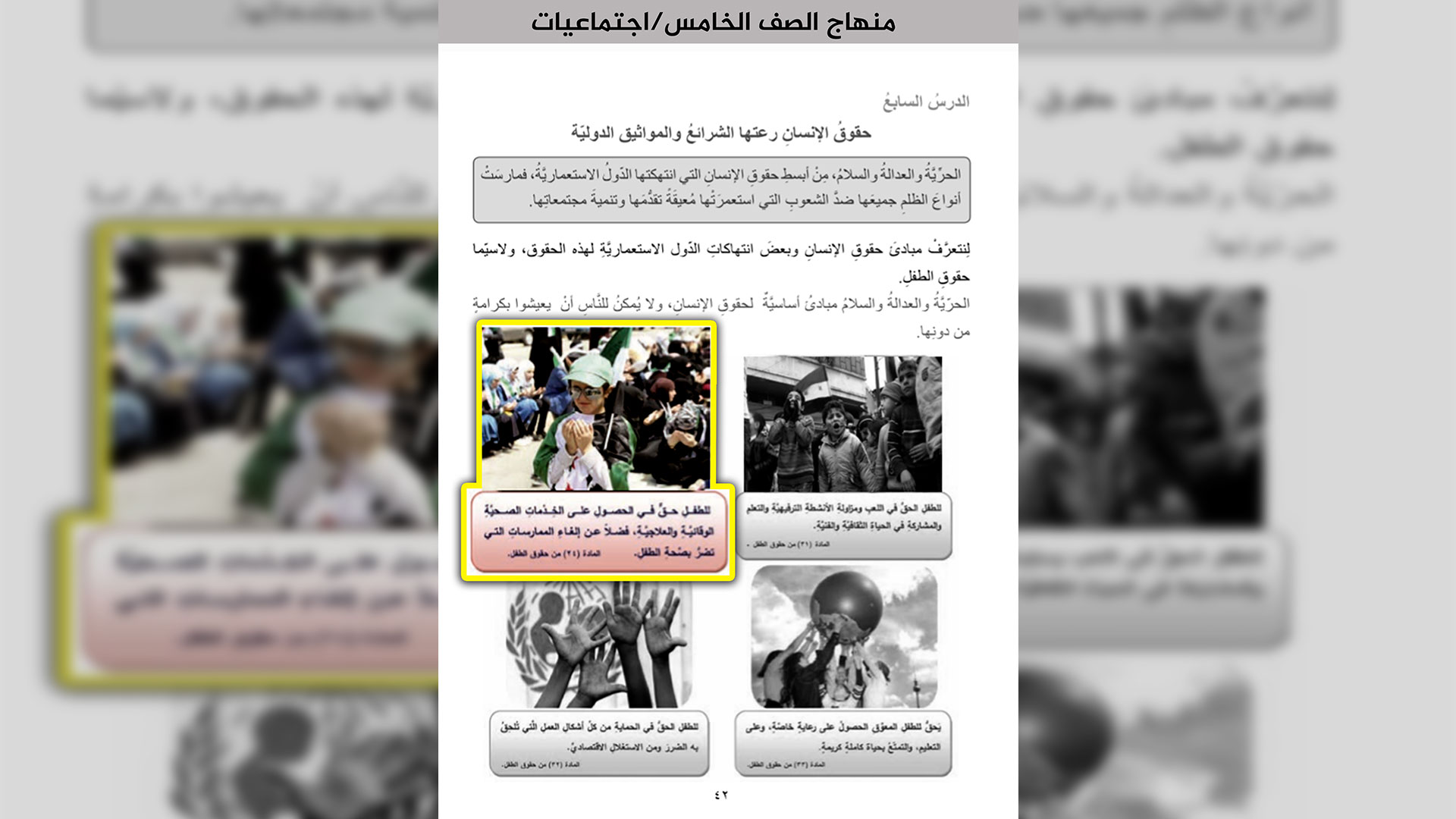
To what extent children accept the other gender?
During the arts and crafts classes in the schools we visited in Qamishli, the girls’ drawings would be about their female friends or families. On the other hand, we noticed that the boys’ drawings would be about their male friends or families. In the schools that we visited in Idlib Countryside, girls drew their mothers, female friends and sisters and did not draw their brothers, fathers, or male classmates. The boys drew their brothers and fathers while most often refusing to draw their sisters or female classmates.
According to Psychiatrist Jalal Nawfal, “it is normal that children until the age of 9 tend to have one friend from the same sex. Between the ages of 12-year-old to 14-year-old, children begin to form groups of friends from the same-sex, while being fully aware of their gender identities. This awareness comes as a result of growing and having an increased sexual and social awareness. Before, there is often competition among boys and girls who are between 8-year-old to 9-year-old nine. As a result of traditional parenting that tells girls they belong in the house while encourages boys to gain an education, boys start to excel in mathematics for example, whereas housekeeping is introduced into the girls’ curriculum in order to prepare them for marriage. Gender-roles, as perceived by society, start to be imposed at the age of 9.”
Mohammad dreams of becoming a professor of mathematics in the future, saying, “Of course I refuse the idea of my sisters working in the future, and I would not accept them mixing with men. The only option would be if they worked as Quran teachers for girls only, because mixing between the sexes is forbidden. I love mathematics because it is useful for society, but I would definitely not allow my sister to study it, it’s a boy’s thing.”
[1] For more texts, review the Syrian regime’s curriculum. The 5th-grade curriculum, Reading, Chapter One, the Lesson of “Artificial Intelligence, We Progress by Science,” and the 6th-grade, entitled “Radio interview: Why did the King Prohibit Books,” and the lesson “Justice Council: Environment and Health.”
[2] For more details, see the 5th-grade Arabic reading lesson, “From Father to Son,” and the 6th-grade lesson "Narrative in the Story.”
[3] See the 5th-grade curriculum, the lesson entitled “Little Hunter.”
[4] See the text in the 5th-grade reading curriculum in Arabic entitled "Modern Harvest" and the lesson “Holding onto Land.”
[5] See the 5th-grade Reading, Chapter One entitled "Chivalry," and the lessons entitled “"The Fruits of Cooperation," "Rights and Duties" and the Social Sciences curriculum for 6th-grade.
[6] See the texts “Geniuses” and “Farabi’s Musical Machine” in the 5th-grade Reading curriculum.


